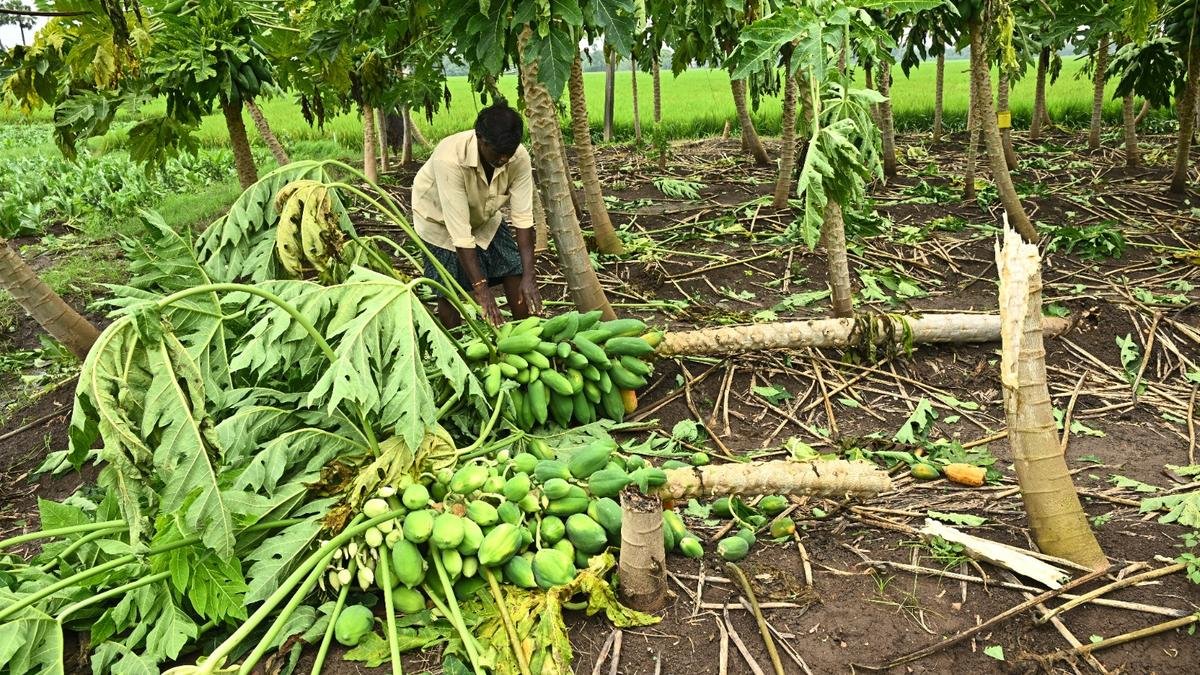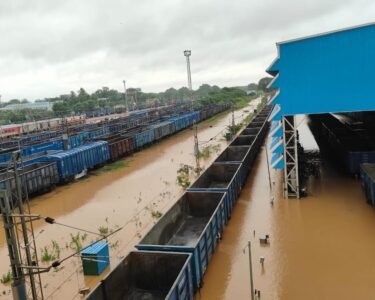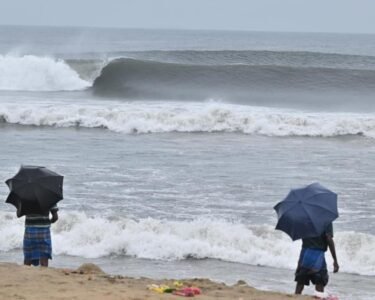Cyclone Montha, which slammed into India’s eastern coastline earlier this week, has left a trail of destruction across several districts in Andhra Pradesh. The severe storm, accompanied by torrential rainfall and gusty winds, claimed two lives and disrupted essential services, including electricity, road transport, and communication. State authorities have launched extensive relief and restoration efforts as thousands remain affected by the aftermath.
The Cyclone’s Path and Landfall
Cyclone Montha, which originated over the Bay of Bengal, intensified rapidly before making landfall between Machilipatnam and Kakinada late on Monday night. The India Meteorological Department (IMD) reported wind speeds of 90 to 100 kmph, with even stronger gusts in some coastal pockets.
After striking the coast, the system gradually weakened into a deep depression but continued to cause widespread rain and strong winds across Andhra Pradesh and parts of Odisha and Telangana. Meteorologists have warned that although the storm has weakened, residual heavy rainfall and flooding risks remain in several inland areas.
Human Impact and Loss of Life
According to Chief Minister N. Chandrababu Naidu, two people lost their lives due to the cyclone — one in Konaseema district and another in West Godavari. Authorities have expressed concern over the human toll but stressed that the number of casualties could have been much higher without timely evacuations and preparedness measures.
Thousands of residents in vulnerable coastal and low-lying regions were moved to safer shelters before landfall. Relief camps have been set up to accommodate the displaced, offering food, drinking water, and medical assistance.
Power and Transport Paralysis
The cyclone’s fierce winds uprooted trees and electric poles, plunging many towns and villages into darkness. Electricity supply was disrupted in several districts, including East Godavari, Krishna, and Konaseema.
Restoration teams have been deployed around the clock to repair lines and clear debris. State Energy officials reported that hundreds of poles were damaged, and repair work may take up to two days in some regions.
Transport networks also suffered major setbacks. The Andhra Pradesh State Road Transport Corporation (APSRTC) suspended several bus services, particularly in the coastal belt, for safety reasons. Train services were delayed, and several roads remained blocked by fallen trees and waterlogging. Traffic diversions were imposed on National Highway 16 near Anakapalli and other routes until clearing operations were completed.
Agricultural and Property Damage
Cyclone Montha also dealt a severe blow to the agricultural sector. Preliminary estimates suggest that over 35,000 hectares of paddy and other crops have been destroyed, with extensive losses to banana, coconut, and vegetable plantations. Farmers in Konaseema, Bapatla, and Krishna districts have been the worst affected.
The state government has ordered an immediate assessment of crop losses to ensure prompt compensation under disaster relief funds. Damage to homes, fisheries, and small businesses has also been reported, compounding the challenges for local communities.
Government’s Response and Relief Efforts
Chief Minister Naidu reviewed the situation through video conferences and district visits. He praised the efforts of the disaster management teams, police, and volunteers for their swift evacuation drives. The state has deployed emergency response units, including the State Disaster Response Force (SDRF), to clear roads, restore power, and assist with distribution of relief materials.
Essential supplies such as rice, dal, oil, and water packets are being distributed to affected households. Health teams have been dispatched to prevent outbreaks of water-borne diseases, while veterinary staff are attending to livestock losses in rural belts.
The Chief Minister directed officials to restore normalcy within 48 hours and ensure transparent compensation for affected families. He also urged the central government to consider Andhra Pradesh’s request for financial assistance to support reconstruction efforts.
Districts Worst Hit
The brunt of Cyclone Montha was felt across the coastal stretch — especially in Konaseema, East and West Godavari, and Krishna districts. These regions experienced intense winds, flash flooding, and storm surges.
In Konaseema’s Mamidikuduru mandal, a woman was killed when a tree collapsed on her home. Local fishermen have also suffered losses as boats and nets were damaged due to the high tide and heavy winds. In several areas, communication networks briefly went offline, making coordination difficult for rescue teams.
Challenges Ahead
While the cyclone has moved inland, the aftermath continues to pose challenges. Power restoration is ongoing, but rural pockets remain without electricity. Waterlogging in urban areas has led to sanitation issues, while damaged roads are slowing the delivery of aid.
The agriculture department has warned of possible pest infestations and fungal diseases in flooded fields. Rehabilitation of farmers and restoration of irrigation systems will be key priorities in the coming weeks.
Meteorologists have advised continued vigilance, as the weakening remnants of Montha could still cause heavy rains in Telangana and northern Andhra districts.
Lessons and The Road to Recovery
Cyclone Montha underscores the growing frequency and intensity of storms hitting India’s east coast, linked to changing climate patterns. Experts have emphasized the importance of enhancing coastal resilience — through better infrastructure, mangrove restoration, and early-warning systems.
The Andhra Pradesh government has pledged to improve drainage networks, upgrade embankments, and strengthen the state’s disaster preparedness mechanisms. Relief measures are expected to continue until normalcy returns fully in all affected areas.
Conclusion
Cyclone Montha’s impact has been devastating for Andhra Pradesh, claiming two lives and causing widespread damage to infrastructure, agriculture, and livelihoods. However, the swift action of authorities and coordinated disaster management efforts have prevented larger loss of life.
As the state transitions from emergency response to recovery, the focus now shifts to rebuilding stronger, more resilient communities capable of withstanding future cyclonic threats.







